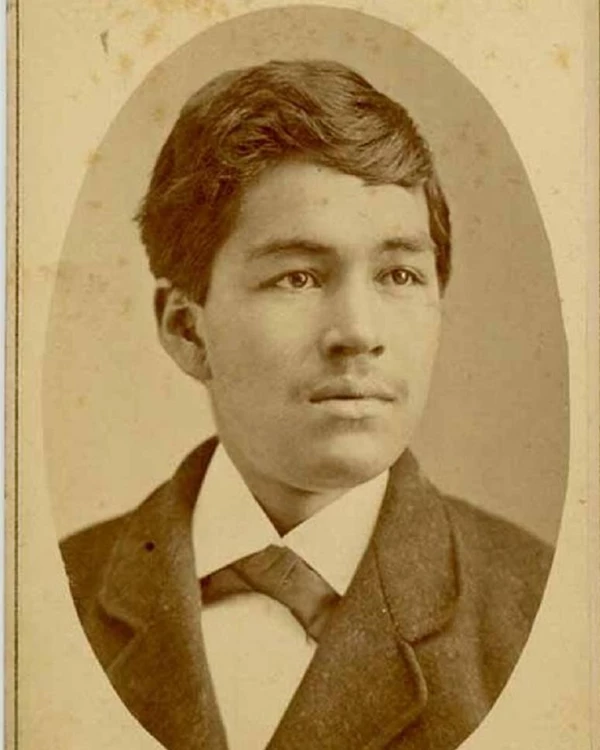Last updated: May 23, 2023
Person
Jimmie Pickett

Jimmie Pickett was the son of Captain George Pickett, the first commanding officer of American Camp, and his second wife, a young Haida woman whose family was working near Camp Semiahmoo. Pickett met her during his service as commanding officer at Fort Bellingham. Mrs. Pickett died within a year of Jimmie’s birth on New Year’s Eve, 1857 and Captain Pickett left the Pacific Northwest in 1861 to serve in the Confederate military during the Civil War. Jimmie Pickett was raised near Shelton on Hammersley Inlet by loving foster parents Catherine and Aaron Collins who nurtured his artistic talents. After Aaron died, Catherine re-married and her second husband William Walter continued to mentor the artistic prodigy and supported his further education.
Pickett’s artistry had attracted notice since his childhood. Visitors regularly came to the farm he grew up on to see the early paintings which he made on the planks of the barn. Displays of his earliest paintings gained notoriety and garnered artistic prizes. As a young adult, Pickett taught art classes at the Union Academy in Olympia which he attended and created commercial artworks such as etchings and engravings for the publisher of Oregon county histories and The Oregonian newspaper. He also regularly stayed in touch with his family back East, including his father and his stepmother after his father’s death.
Pickett’s time at the San Francisco Art Institute was eventful but also difficult. During his time there, he met his half-brother, George Pickett, Jr. but their meeting did not go well. Historical sources are murky about the specifics of this family encounter but it is believed that race—specifically Jimmie’s indigenous ancestry and near-identical appearance—caused a lasting rift with his younger brother who seems not to have known that his half-brother was half-indigenous. Pickett also felt that the formal artistic training of the only professional art school on the West Coast—was too slow for him and that it was not a good use of his artistic talents. He dropped out of school after five months and moved back to Portland, where he took on students and became both a fine and commercial artist.
Pickett died of typhoid complicated by tuberculosis at the young age of 31. In Portland, he was part of the staff at The Oregonian, where he worked as a regular illustrator. Pickett also produced sketches and engravings of cityscapes and highly admired oil paintings. Though he died young, he was beloved by his Portland art community friends who said of him in an obituary: “His life seems as a picture of magnificent conception laid away half finished As a beautiful poem half written, or a sweet sad song whose melody is shattered just as we begin to be enchanted by its music. James Pickett will ever live in the memory of those who knew him best as one of the truest, purest, manliest of men, as well as one of the rarest geniuses this Northwest has ever produced.”
